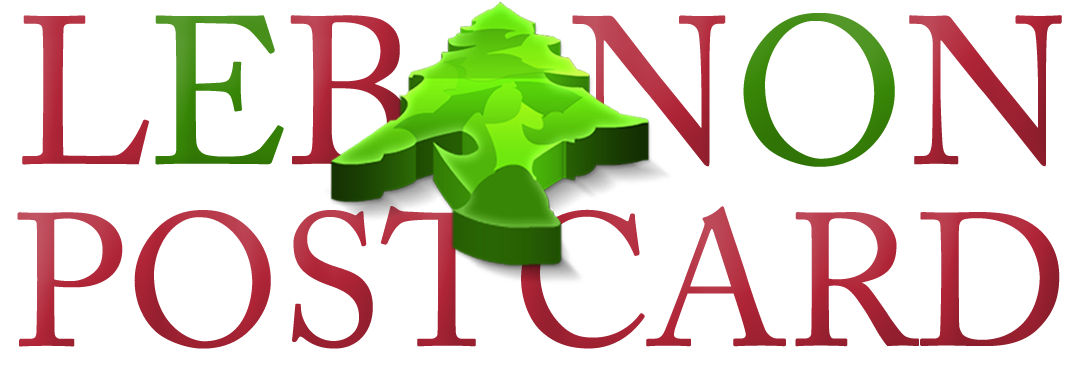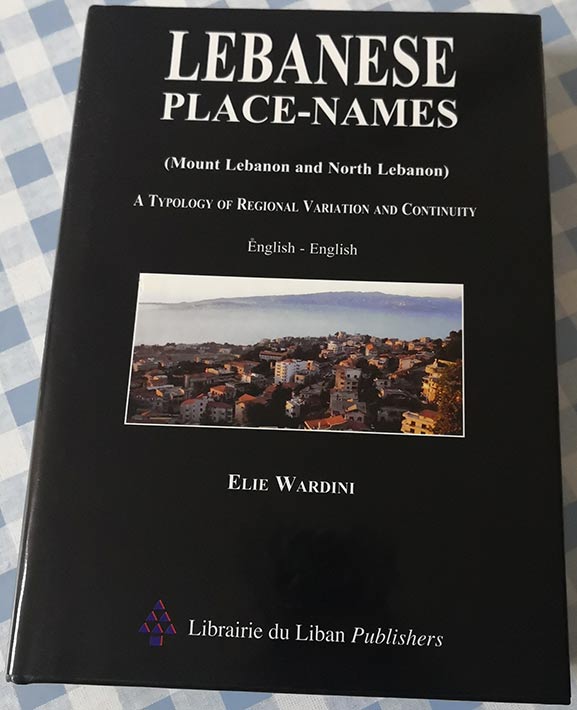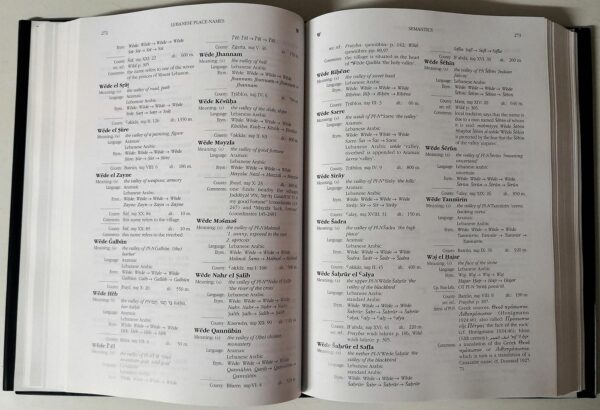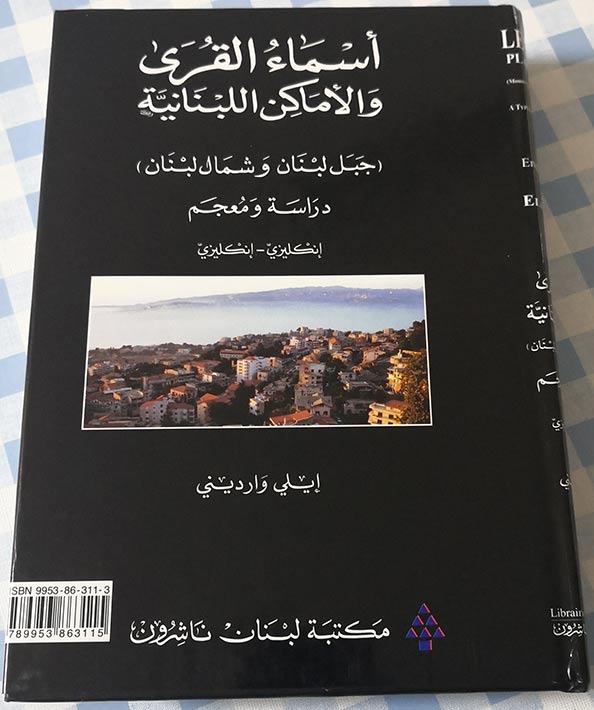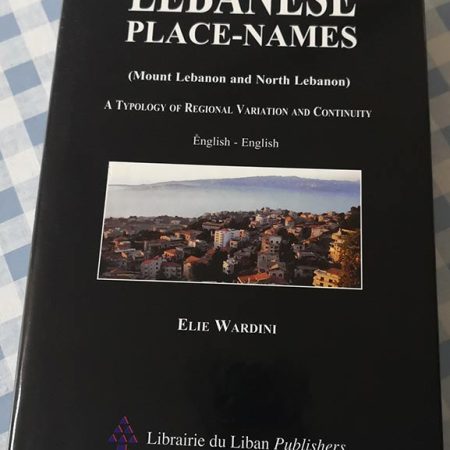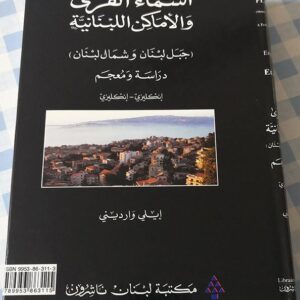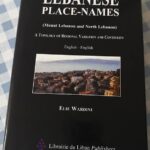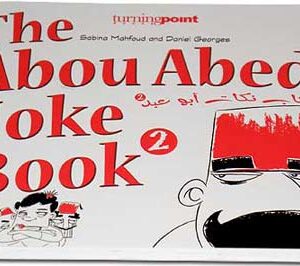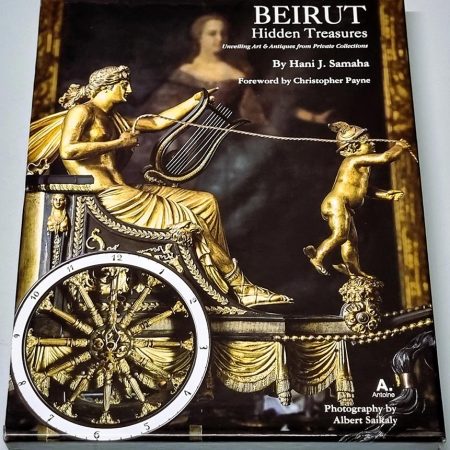Lebanese Place – Names
$ 26.90
Lebanese Place – Names (Mount Lebanon and North Lebanon) A Typology of Regional Variation and Continuity. English by Elie Wardini, 720 pages – 24.5x19x4 cm.
- Description
- Shipping & Return
Description
LebanonPostcard presents the Book Lebanese Place – Names (Mount Lebanon and North Lebanon) A Typology of Regional Variation and Continuity. English by Elie Wardini, Hardcopy 720 pages – 24.5x19x4 cm. Librairie du Liban Publishers
About the book
The present volume is a comprehensive study of some 1724 Lebanese place-names in the districts of Mount Lebanon and North Lebanon. The aim has been to: a- establish a database of place-names based on fieldwork; b- present the etymologies of these names based on the latest findings in Semitic lexicography, onomastics and dialectology; and c- plot the results across the Lebanese territory.
The present volume presents a glimpse of Lebanon’s yesterday. An analysis of the place-names, focusing on language, geography and society, tends to confirm that language and religion shifts in Lebanon were gradual. Nearly 49% of the place-names are Arabic, 36% are Aramaic, while some 6% are Phoenician. The traditional dividing lines between religious groups are only slightly reflected in place-names. These groups seem to have had a similar sociocultural development. The landscape holds a central position in Lebanese place-names. Water, human occupation, religion, and the family also hold a prominent position.
About the Author
Born in Bickfaya, Lebanon, in 1961, Elie Wardini has specialized in Semitic languages at the University of Oslo. At present, he is a professor of Arabic at Stockholm University and head of the Department of Middle Eastern Studies.
The author’s main field of specialization and interest within Semitic languages is West Semitic comparative and diachronic philology. His main framework is within a sociolinguistic framework seeing Semitic languages as languages in contact among each other and other non-Semitic languages.
He has written on Neologisms in Modern Literary Syriac and has conducted extensive research on Lebanese place-names. In addition, the author is conducting in-depth research on Lebanese dialects. Within the framework of Pidgin studies, he is also studying the speech of immigrant communities in Lebanon, especially the Arabic spoken by members of the Armenian community and Sri Lankan guest workers.
a. View or Modify What is in Your Shopping Cart.
When in the Shopping Cart area of the site you can view or modify what is in your shopping cart at any time by clicking on the Add More Items/Refresh Totals button along the bottom of your screen.
b. Checking Out and pay for your purchases online.
When you have finished viewing and wish to end your shopping and pay for the items you have selected, click on the Pay & Finish button at the bottom of your screen.
You will be led through a series of secure ordering procedures and will be asked to fill in personal, shipping and payment option information. When this is completed, you will press the Submit Secure Checkout button and your order will be transmitted to LebanonPostcard for fulfillment.
Absolutely not! Right up until the point why you are asked to review the order information you have given us and if it is correct to click on the final Submit Secure Order button, you can abort the order.
If you don't press the Submit Secure Order button then no order information is transmitted to us.
a. Payment by Credit Card
We accept American Express, MasterCard, Visa, Discover, PayPal... etc... for online payments through 2CheckOut.com. Also, arrangements can be made for bank draft and certified check payments by regular post.
b. Payment by Bank Draft and Certified Check
If you would prefer to pay for your purchases by mail, then you have to contact us first so we can give you our account information.
c. We accept as well payment through WesternUnion, RIA, OMT, BOB Finance, Whish Money.
All prices include shipping and handling. LebanonPostcard will be responsible for sending the packages you order, at your charge, through the service D.H.L. / E.M.S. with tracking number code guaranteeing reception of the package.
We ship as soon as possible, but within maximum 4 days after the order is received.
Credit cards are not charged until we actually ship the items. The items may take between one and six days to arrive, according to the country they are sent to.
Packages are sent with track code to guarantee reception, and delay is rare. In the event of non-delivery or delay, nothing can be done for 7 days. At the end of this period, on our being informed, a demand will be made for the package to be traced. If 14 days after the first dispatch there is still no delivery, a second package will be sent free.
Packages inside Lebanon are sent registered through LibanPost to guarantee reception, and delay or non-delivery is rare. In the event of non-delivery, nothing can be done for 6 days. At the end of this period, on our being informed, a demand will be made to LibanPost for the package to be traced. If 12 days after the first dispatch there is still no delivery, a second package will be sent free.
We ship anywhere in the world. Zones and countries we ship to
Yes. You can cancel you order when you receive an email from us confirming your order, you can reply by canceling it.
